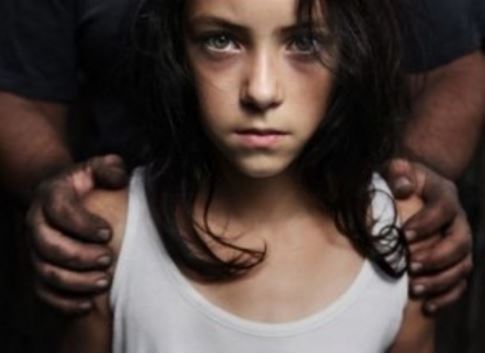
At around 3 years of age, most of us start pointing out the differences between appropriate touching and inappropriate touching to our children. It varies between children as to how fast they pick up on these subtle and not-so-subtle teachings we parents do to keep them from uncomfortable and self-demeaning situations.
In my generation, as a Sri Lankan Tamil child we were taught most of these differences around puberty - and moreso girls than boys. However, as my first born is a boy, I find myself being concerned and on the lookout for any inappropriate touching or situations earlier in his life due to all the creepy stories that turn up through the grapevine and on the news regarding teachers, camp counselors, sports coaches and even extended family members abusing children of a very young age. Most stories reveal that inappropriate behaviour starts off in subtle ways and leads to dangerous outcomes which the child may or may not share with parents. And in this day and age, these concerns don’t stop with just girls; boys are equal targets as well.
When I was growing up, things were more black and white for me. Girls in our community were not encouraged to hug men as part of niceties. Girls did not rub elbows with boys or men who were outside of our immediate family. We didn’t chit-chat and dance with the opposite sex at parties. We didn’t even have entertaining conversations with them until we were old enough to hold our own. Things were kept at a need-to-speak basis or only went as far as formal niceties and discussions about school and extra curricular activities we were part of.
This is not to say that these behavioural restrictions are the way to go with our children. But it was clear to us as to what was acceptable and normal and what fell outside of it. Yet in today’s society, everybody is very "touchy-feely" with each other. People who hardly know each other hug as part of saying hello and goodbye, and most of us are becoming increasingly desensitized towards sexually heightened behaviour and dressing styles as the “new normal”. So how can a child easily spot inappropriate touching or behaviour from an appropriate one? To be brutally honest, I myself have trouble at times.
It is important to make sure that our children are in the know about what forms appropriate and inappropriate touching - or at the very least know how they can define what’s OK and what’s not. Children should also be able to come to their parents about any doubts as things are quite grey in today’s society.
To aid us in laying out the basic principles with this thorny topic, here are a few fellow blogger mamas submitted pointers from B-Inspired Mama’s 10 tips for teaching kids about good touch-bad touch.
Keep Conversations Light and Easy “One thing I find that helps is keeping these kinds of conversations serious but still unemotional (almost lighthearted) so that kids feel very comfortable talking about it and asking questions. And I try to let these conversations happen naturally and work them into our everyday life. Like talking about it during potty or bath time.” -Krissy from B-Inspired Mama
Use the Swim Suit Rule “In the guidance lessons in kindergarten classes, children were told that if your swimsuit covers it, it’s a private area and no one should be seeing or touching that area. Tell a grown up if someone is touching you in the wrong places because it’s mommy and daddy’s job to keep you safe. It’s a simplified version but easy for younger children to understand.” -Kim from The Educators’ Spin On It
Edited to add: Reader and child welfare worker, Liz, mentioned in the comments to think beyond the swimsuit rule. “Most predators who have an on-going relationship with the child (teacher, coach, relative, clergy etc.) will not begin by touching the child in the sensitive areas, but will begin by rubbing their back or stroking the hair. Children, because they are literal creatures, will think "well, I don’t like it, but it must be okay because it’s not covered by my swimming suit." And then by the time the predator moves to the sexual areas, it may be too late as the grooming process is fully underway. So we recommend drawing the line at any touch or space intrusion that makes the child uncomfortable.” Another reader pointed out that we cannot forget that the mouth should be considered a private area too. I’m so glad that we have this series to learn from one another as moms!
Empower them to Say No “I also always stressed that if someone touched them in a way they didn’t like to tell that person to stop - and to always tell me about it. Keeping the lines of communication open, even with and especially with our private areas - is of utmost importance!” -Laura from playdrmom
Don’t Force Affection “I don’t force my daughter to hug someone if she doesn’t want to. I know that a hug from a loving adult isn’t a bad touch, but I feel like this empowers my daughter to feel like she has control over her physical body.” -Rebekah from The Golden Gleam
Help them Trust their Feelings “A therapist told me that kids should be taught that a touch (from anyone) that makes them feel bad or uncomfortable is a bad touch. Kids should be taught to trust their own feelings.” -Krissy from B-Inspired Mama
As per “Don’t Force Affection”, I’m not a fan of pushing my kids to hug and kiss people no matter how close they are to me. If the children don’t feel close to the adults in question or have a loving relationship with them, they shouldn’t feel forced to carry out actions that portray closeness and love. I’m seeing more and more young parents pushing their children on to those they see once in a while, and to hug and kiss them saying “that’s my friend, it’s OK” or “that’s my relative, it’s OK”. It would be clearer for children to follow their own comfort level and feelings about what is appropriate touch for them.
There are many avenues to address this concern and many controversies and disagreements about how a parent should go about it when regulating their children’s safety and well-being. The bottom line is it’s an increasing concern with cringe-worthy statistics that reveal the need for more awareness and action in the South Asian community.
This post originally appeared on Mommy Culture, one of our partners from the Tamil blogging community. If you have your own blog to share with the roughly 50,000 unique viewers who visit our site monthly, reach out to us at [email protected].

























